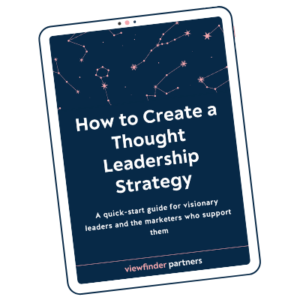As we close out the year, I’ve been reflecting on 2024. I looked back again at my word of the year: INTENTION. Last January, I felt a pull to limit distractions and focus my time, attention, and work.
Was I successful? Well…kind of.
2024: A bumpy year
While I started the year with intention, I couldn’t have anticipated how bumpy and unpredictable this year would be. There was a lot I couldn’t control. Some weeks, clients would be knocking down my door and filling up my calendar…and sometimes, everyone would disappear, stuck in indecision and uncertainty.
Especially in the months around the election, I noticed a lot of freezing. People slowed down and waited.
I predicted that December would bring a whirr of activity as everyone thawed out a little and realized (ack!!) that the year was almost over and they needed to do, publish, accomplish, spend, etc. And I was right! This year, December 5th was the day. It felt like everyone I’d ever worked with suddenly appeared, ready to collaborate (and hopefully before Christmas!). [If you were one of those people, hello, thank you, and I’m so happy to work together. Also, I’m going to take a long nap now.]
This wasn’t the first year that felt like a rollercoaster ride, and I’m not the only one who was on board. Every entrepreneur and service provider I know has felt the strain of this uncertain year. And many felt the end-of-year busyness as business soared back to life. (“My December inbox is WILD” is something I heard—and said—over and over.)
All things considered, my 2024 was great. My accountant is going to scratch her head at the big peaks and valleys in my revenue, but in the end, I had a solid year doing work that I deeply enjoy, so I’m grateful.
But while I’m feeling grateful, I’m definitely not feeling passive or content. I’m not sitting back, blithely counting my blessings, and ignoring the red flags that have paved the way here. I have no reason to believe that the market is going to get any smoother or more certain as we look into 2025. Here’s why…
Major shifts for marketers
The uncertainty we’re stewing in is more than just the political climate or economic instability. It’s not a special 2024 “thing.” Thought leadership and, more broadly, “content marketing,” are witnessing industry-rocking shifts. The way companies use and value content as part of their marketing and sales strategy is changing.
1. SEO has completely shifted.
Anyone whose bread and butter was SEO content (think blog posts optimized to drive web traffic) is feeling seismic cracks. The way search engines like Google show us web results is changing, which has quickly rerouted how many people use the Internet (ie not actually clicking through to read websites).
This shift has underlined the importance of developing actually helpful content, since search engines are sniffing out the “sludge” and prioritizing the most valuable information and expertise.
That’s why so many companies are moving from an old-school SEO strategy to a modern thought leadership strategy. As I wrote last year: I’m convinced that the next era of content marketing will reward helpful experts who make these shifts:
- Instead of answering fact-based questions better than your competitors → share your unique perspective in a way only you can.
- Instead of choosing topics based on keywords and ranking → build content based on your customers’ challenges and opportunities.
- Instead of Googling to build your next thesis → try journaling to reflect on your own perspective.
- Instead of researching what people are searching for → ask yourself, “what do I want to be known for?”
All of these changes are good for people who are thinking intentionally about thought leadership. But the breakneck speed of change has left a lot of marketers and leaders frozen and slow to act.
2. Everyone’s a thought leader.
Another factor contributing to the freeze: the oversaturation of thought leadership. We can look at LinkedIn as one example.
In 2013, LinkedIn added the ability to post updates. Before then, LinkedIn didn’t have a news feed. It was just a database of resumes.
15 years later, everyone has hot takes to share on LinkedIn. My feed is overflowing with people who are building their personal brand, mining their experiences for insights, and teaching others.
In many ways, that’s a positive change—I love seeing more people talking about their work. But the increasing volume of people who are active on LinkedIn (and on podcasts, YouTube, and insert-any-platform-here) means that there’s a lot of noise out there.
I’ve seen that it’s harder for the leaders I work with to make themselves heard, especially when they just want to share their ideas, not game the algorithm or keep up with the buzzy trend of the day.
3. The future of content marketing is uncertain
Years ago (probably in 2014 or so), I wrote an article titled “What to do when your blog is a teenager.” Content marketing was in its adolescence, I argued.
If content marketing was feeling teenage angst back then, it’s having a midlife crisis now. B2B companies are questioning whether the customer funnel of the past really works now. Do people still fill out forms to download gated white papers? Does all that posting really build to any results?
Like in point #2 above, doing this well becomes harder when there are a lot of people doing it LOUDLY. The internet has become a very saturated place.
I still believe in the power of good ideas, communicated effectively and consistently. But I’d be careful of anyone who guarantees you a surefire , marketing playbook in 2025. It’s all changing so fast.
So what can you do if you want to make your voice heard? Keep going, push yourself to communicate more clearly, stay true to your values, and stay curious about what might work next.
More competition in the freelancing pool
I’m in my 6th year working for myself. In my first few years, I felt so much new freedom and control that I was telling everyone they should quit their jobs and go solo, too.
When I started out in 2019, I made up the job title “thought leadership strategist.” I didn’t know anyone else who did this specific kind of work (1:1 comms support for leaders). I had to explain what I did all the time. It felt like I was at the beginning of something new.
And there was a lot of work for me to do! During the pandemic and shortly after, as companies went remote, they suddenly needed a lot more help creating a digital presence for their ideas…from their home offices. Leaders were suddenly on their own, without a team of support staff down the hall, and they needed coaching and support from people they could trust. Suddenly CEOs weren’t flying around the world, so they had time to make podcasts and write articles. They wanted to share what they were seeing and hearing. They wanted to keep their finger on the pulse of all the changes, and they needed help developing their platforms as thinkers to do that.
Just a few years later, the market is much different. First, as I noted above, we’re drowning in thought leadership. And second, there are so.many.more people who want to help companies develop it. I personally know at least ten other “thought leadership strategists.” PR agencies, content agencies, and even SEO agencies have gotten into thought leadership as a primary service, especially as traditional SEO has become a less dominant strategy for companies.
In short, the pool is crowded.
Looking ahead to 2025
The market is tighter. So what’s my strategy? It’s similar to the advice I gave above: Keep going, push myself to communicate more clearly and build stronger relationships, stay true to my values, and stay curious about what might work next.
…Which leads me to my “word of the year” for 2025: BOLD. When the future feels bumpy and the old strategies don’t work anymore, it’s time to get bolder, take more risks, and think bigger.



![what is a thought leader [paint palette image]](https://viewfinderpartners.com/wp-content/uploads/2019/11/im-not-a-thought-leader-1-300x200.jpg)



